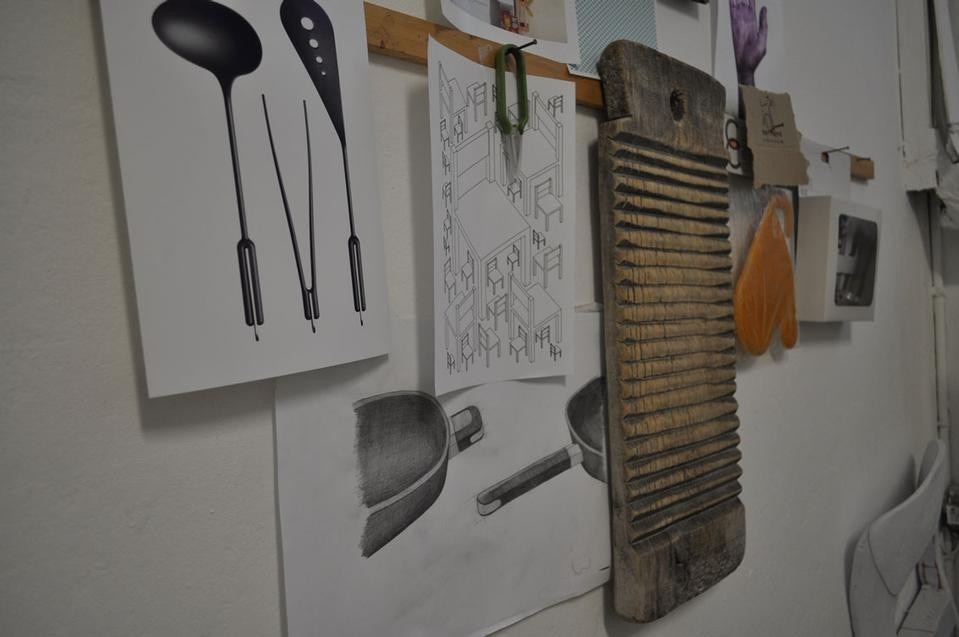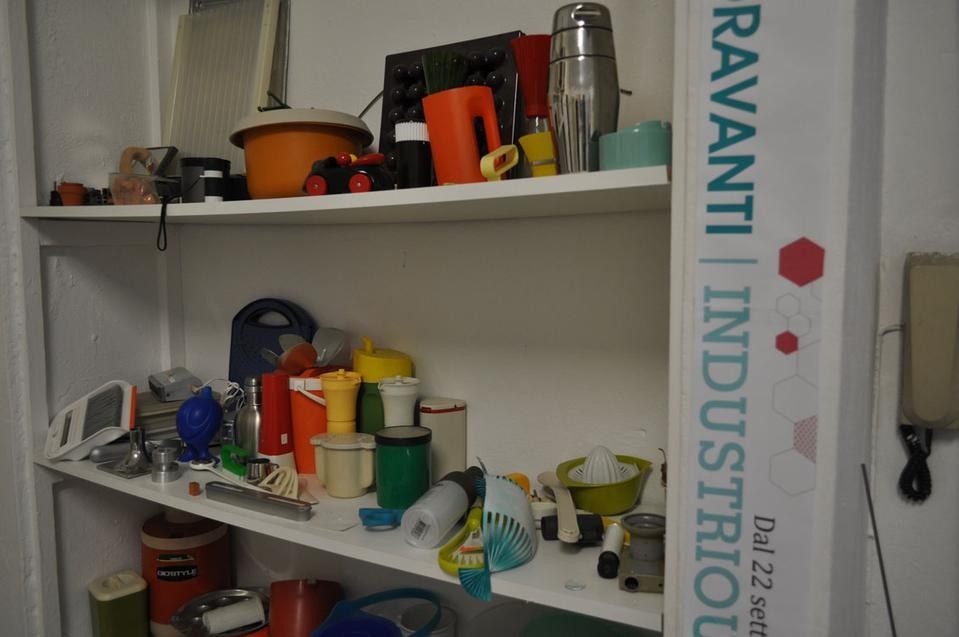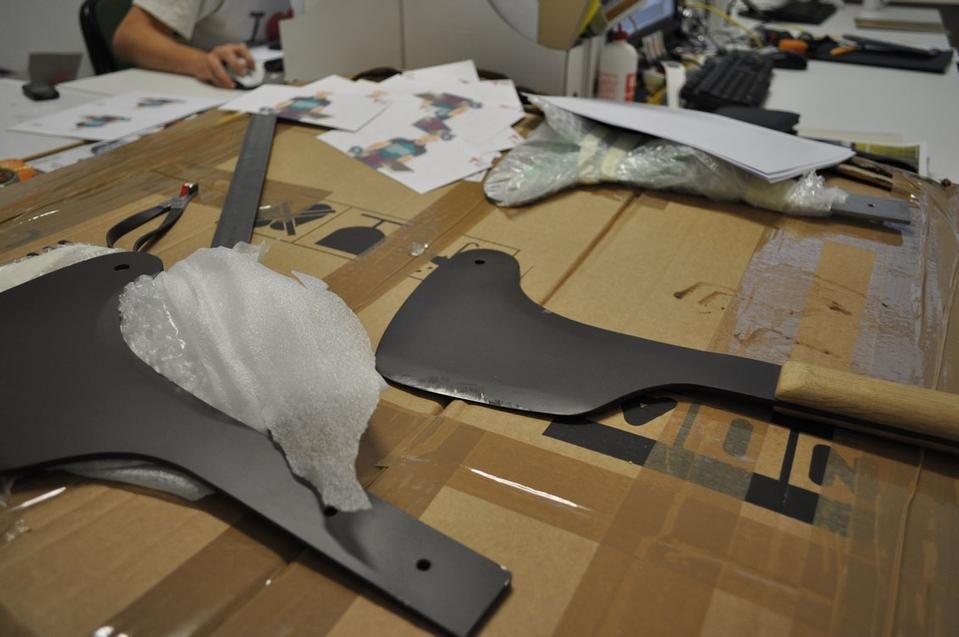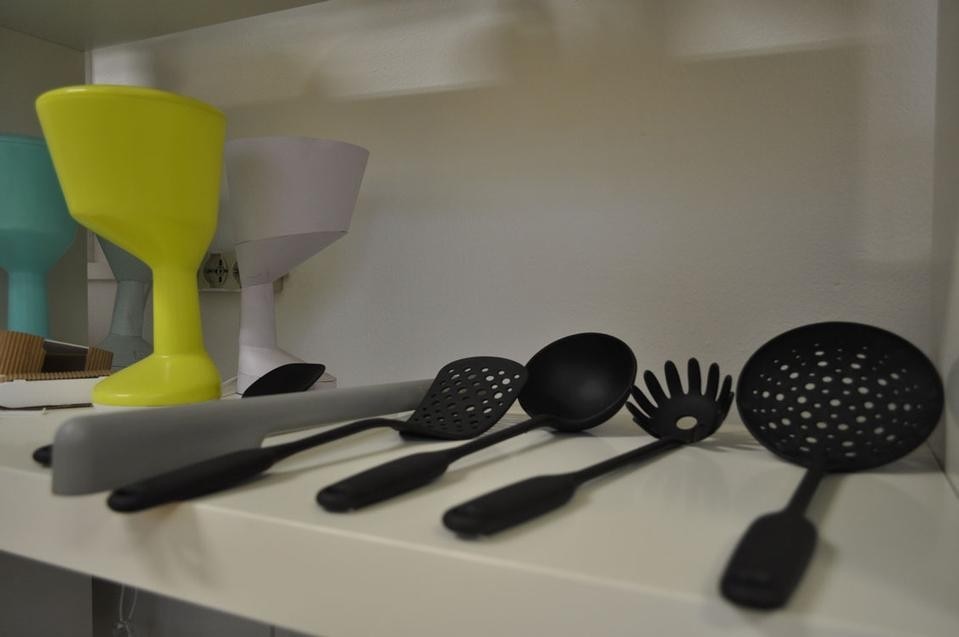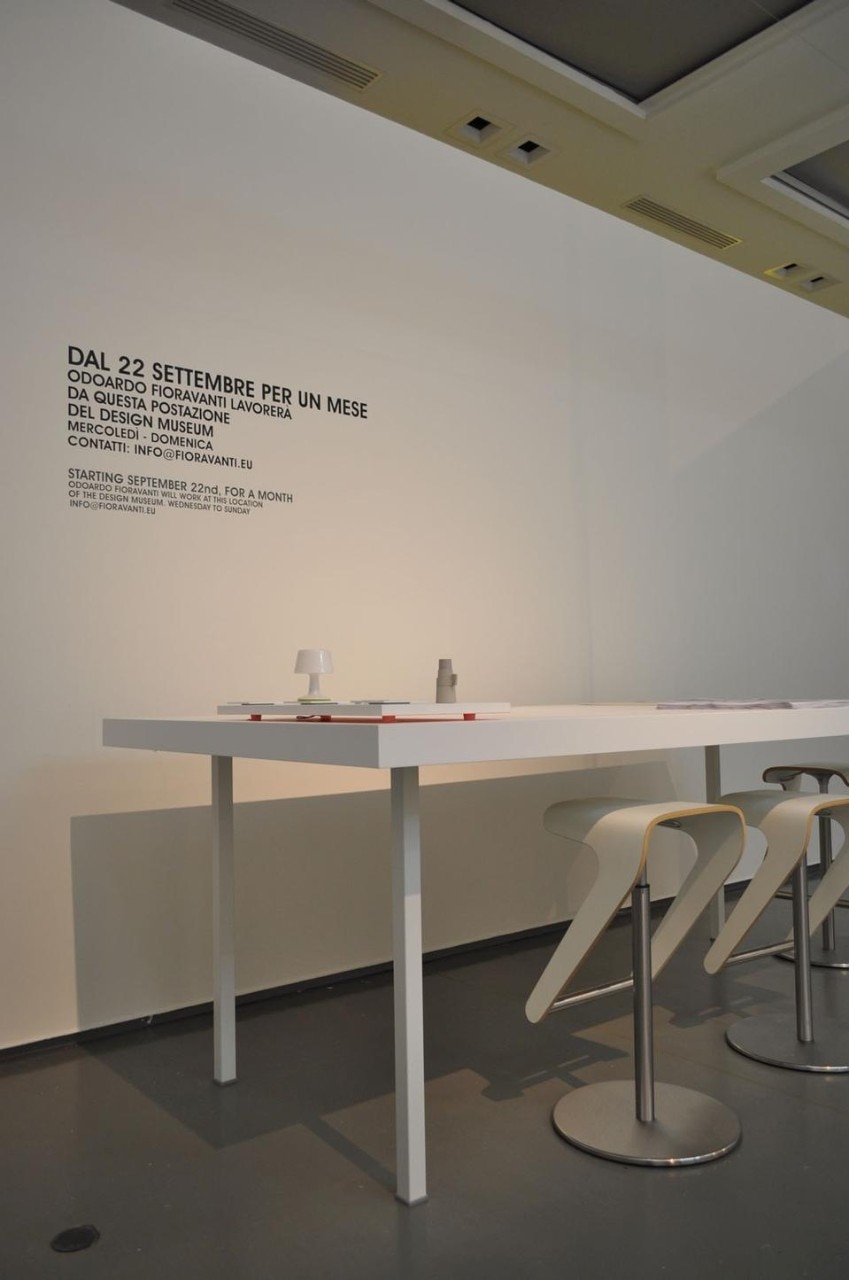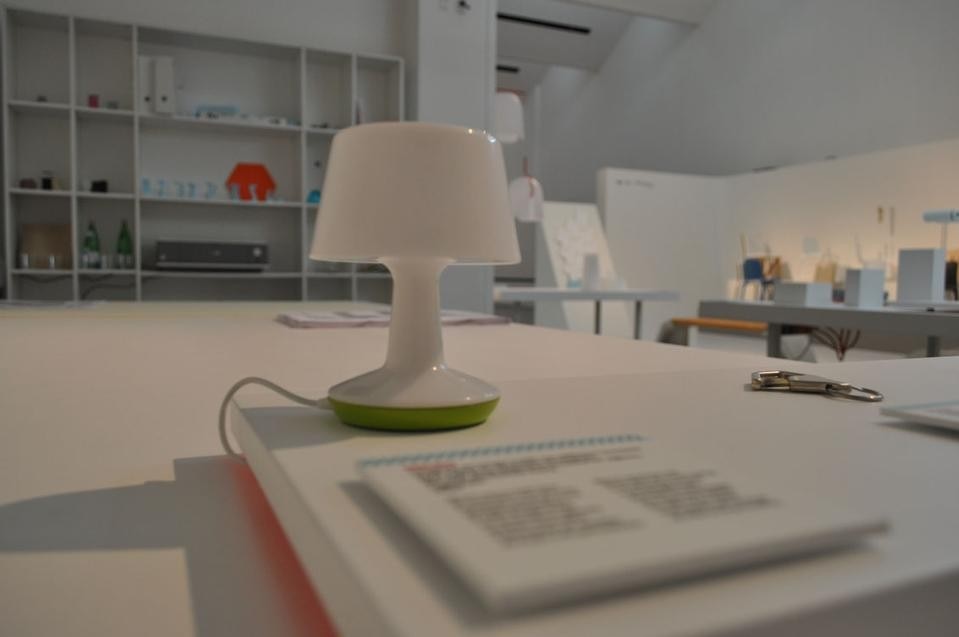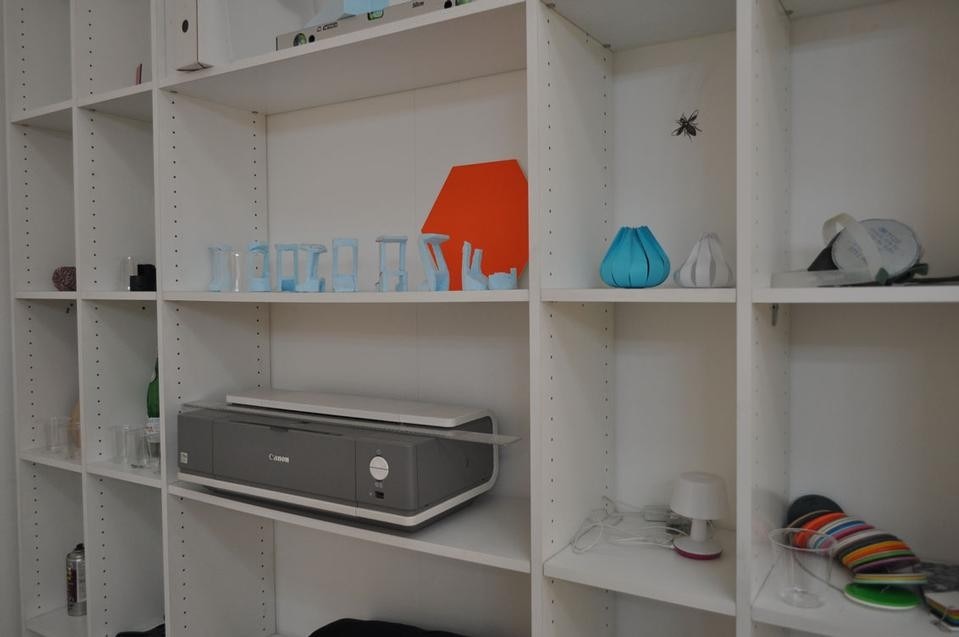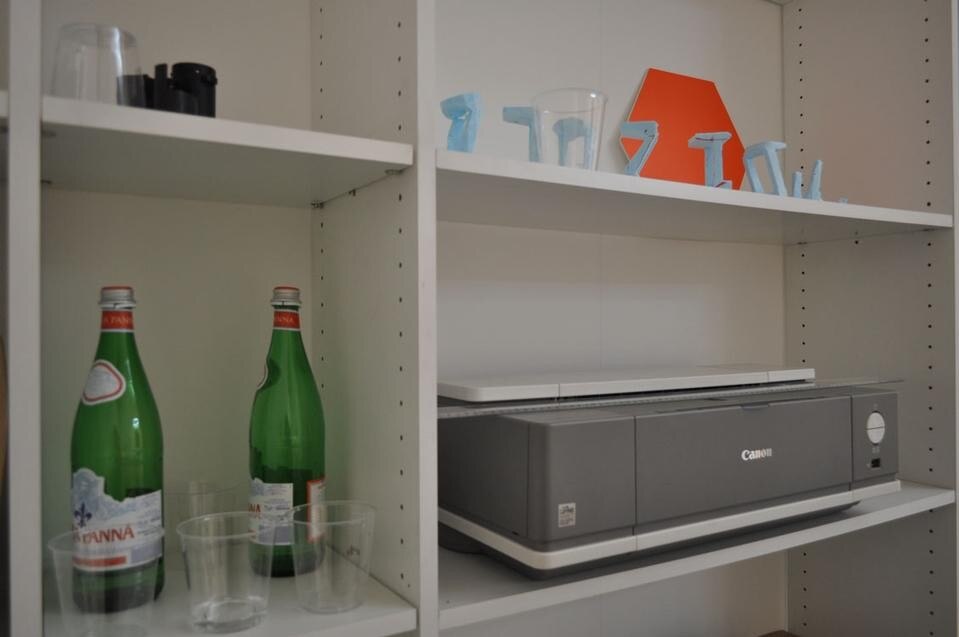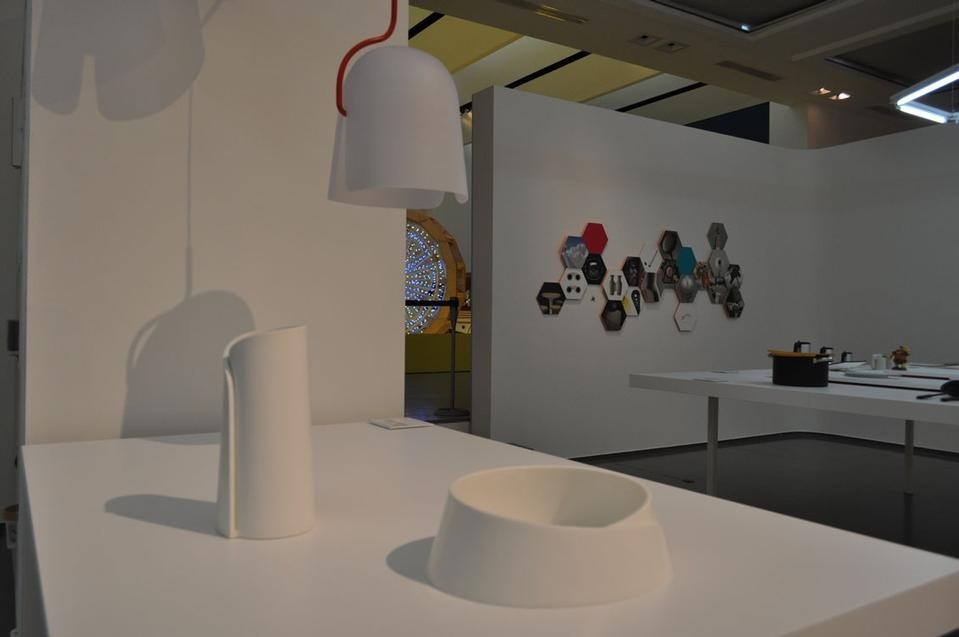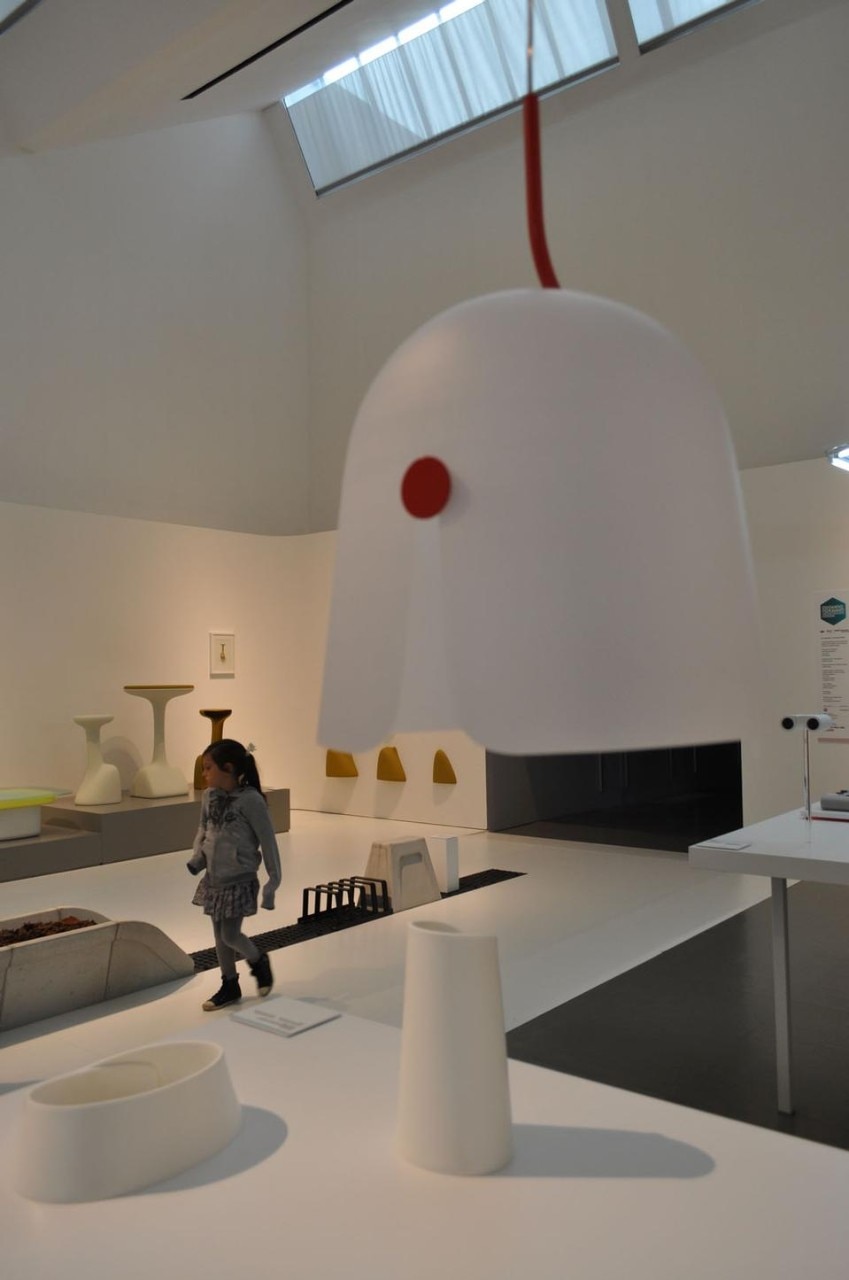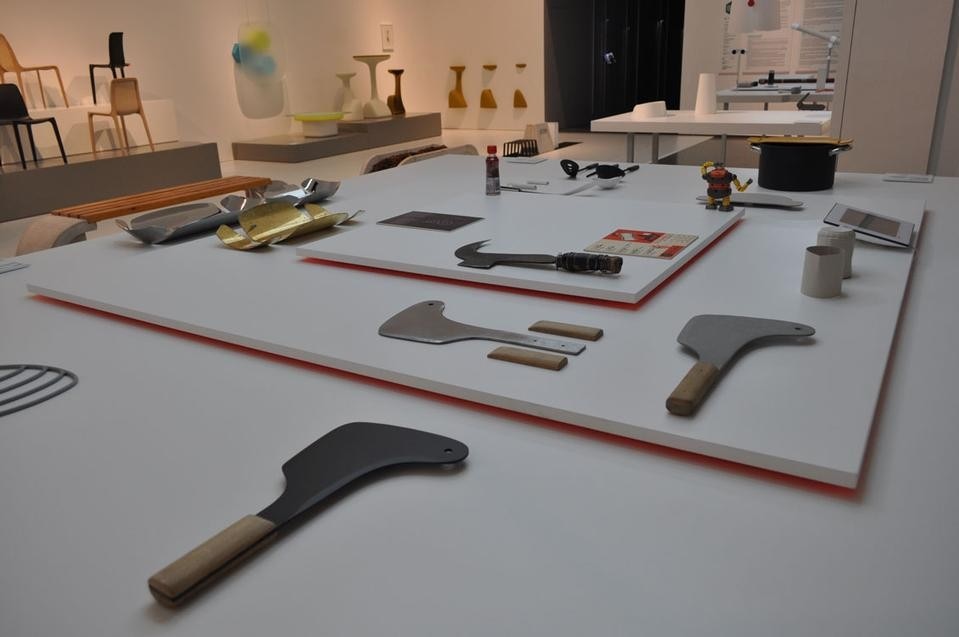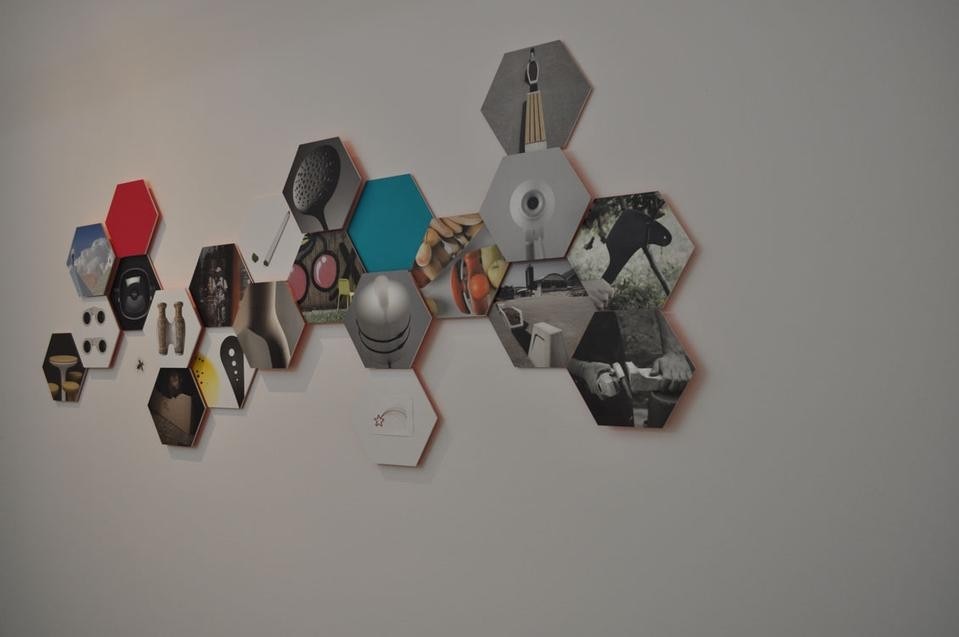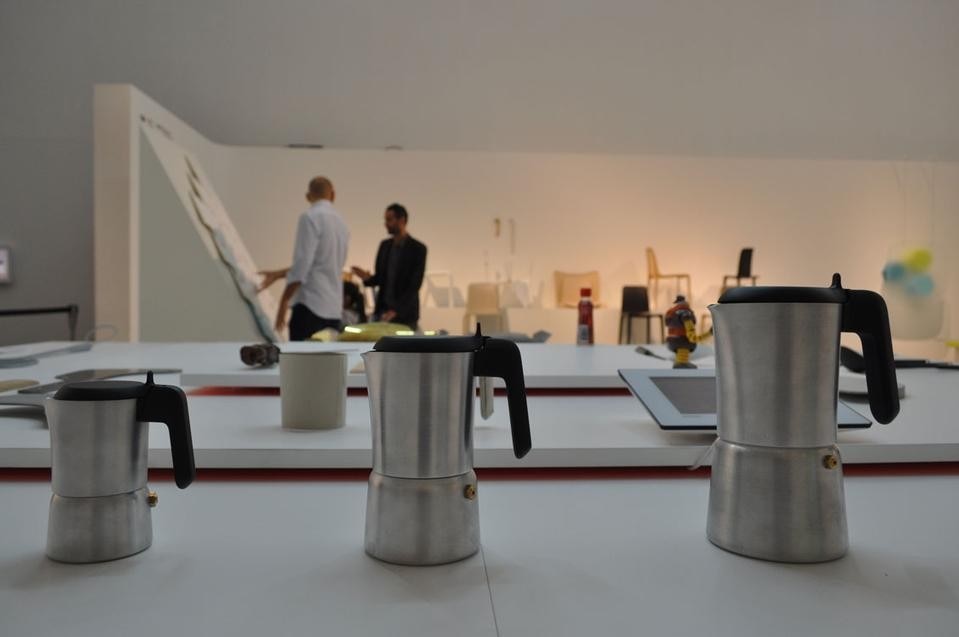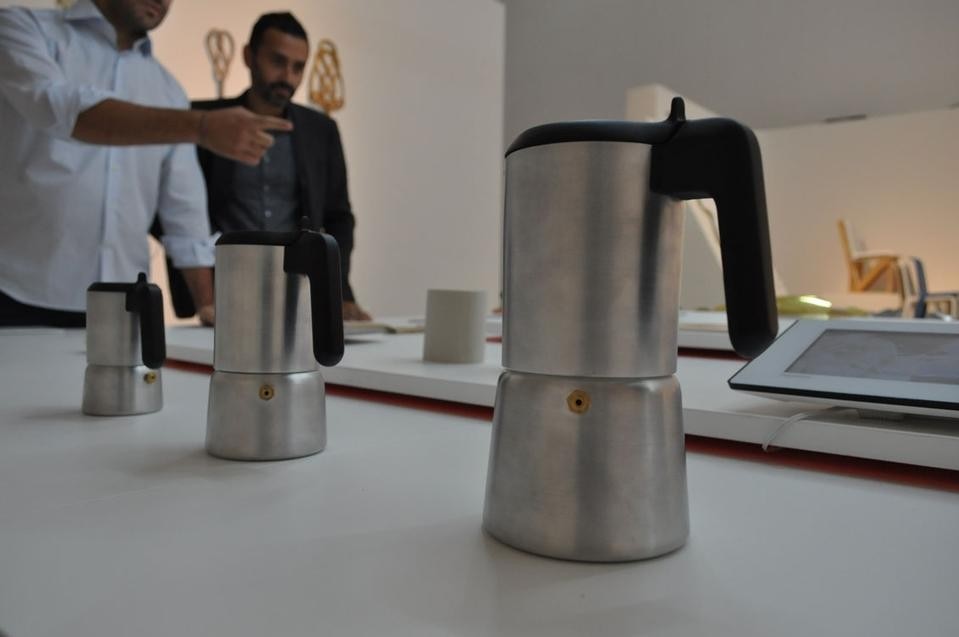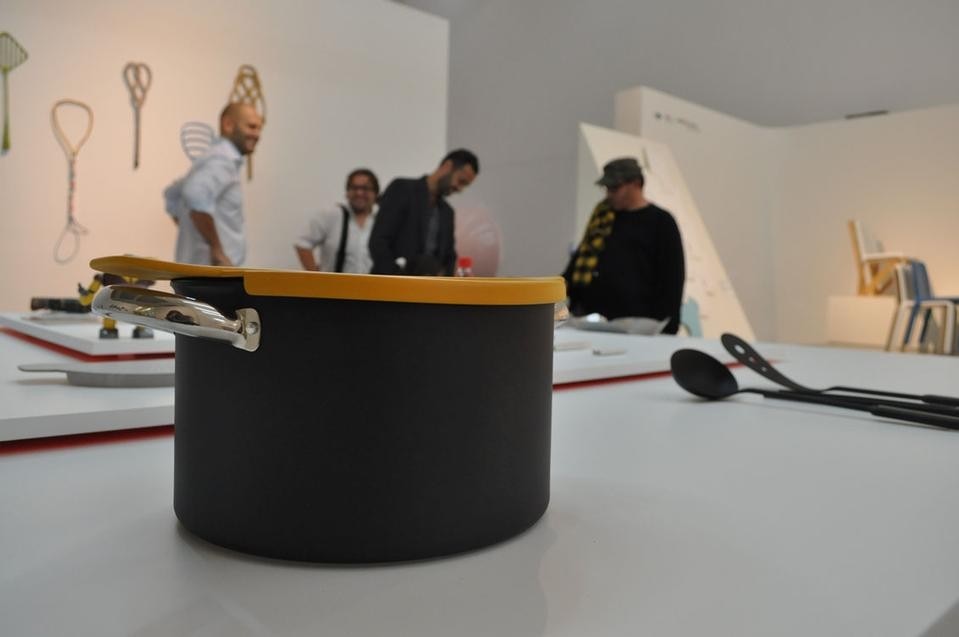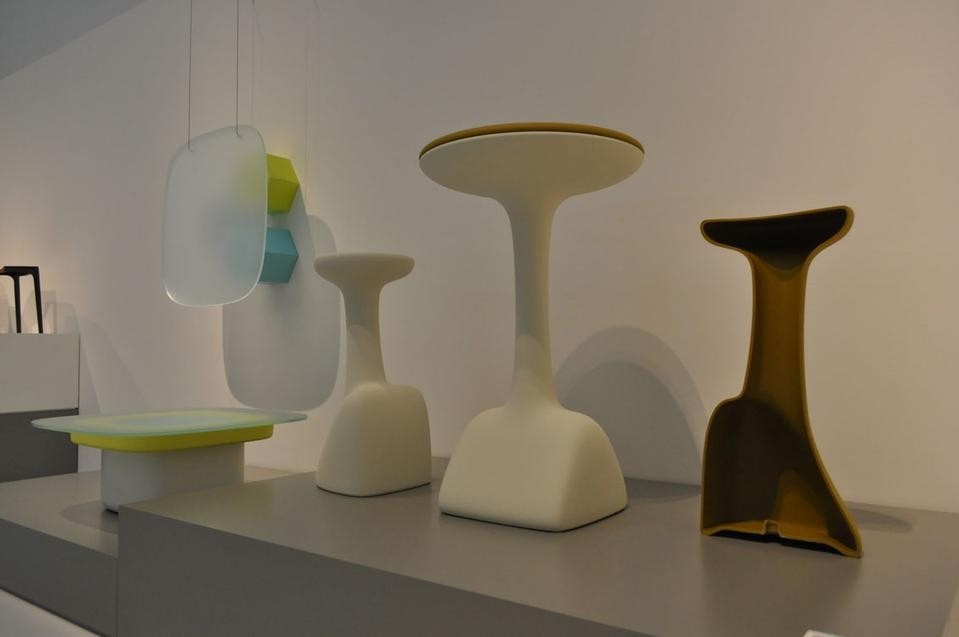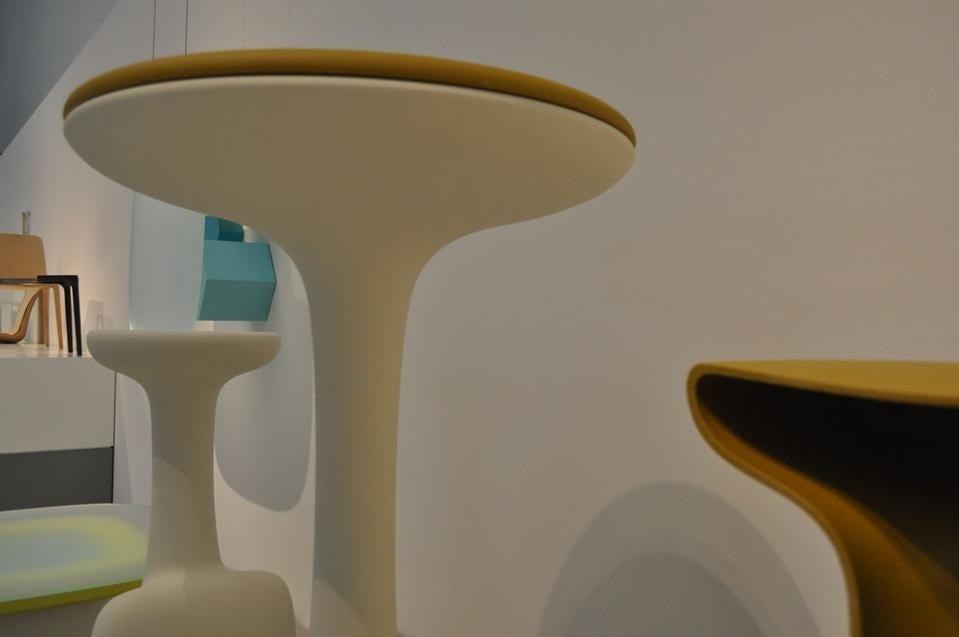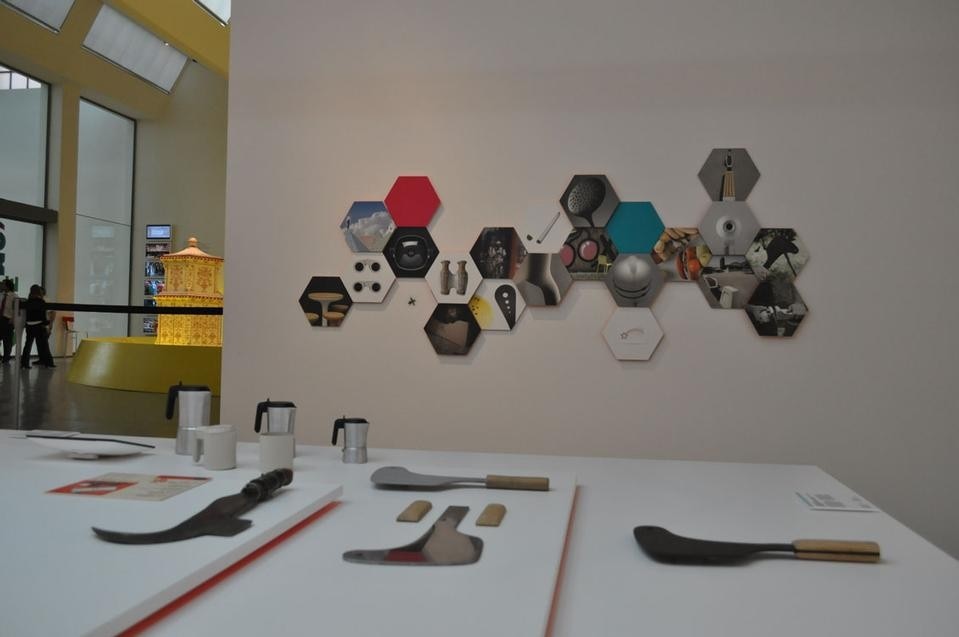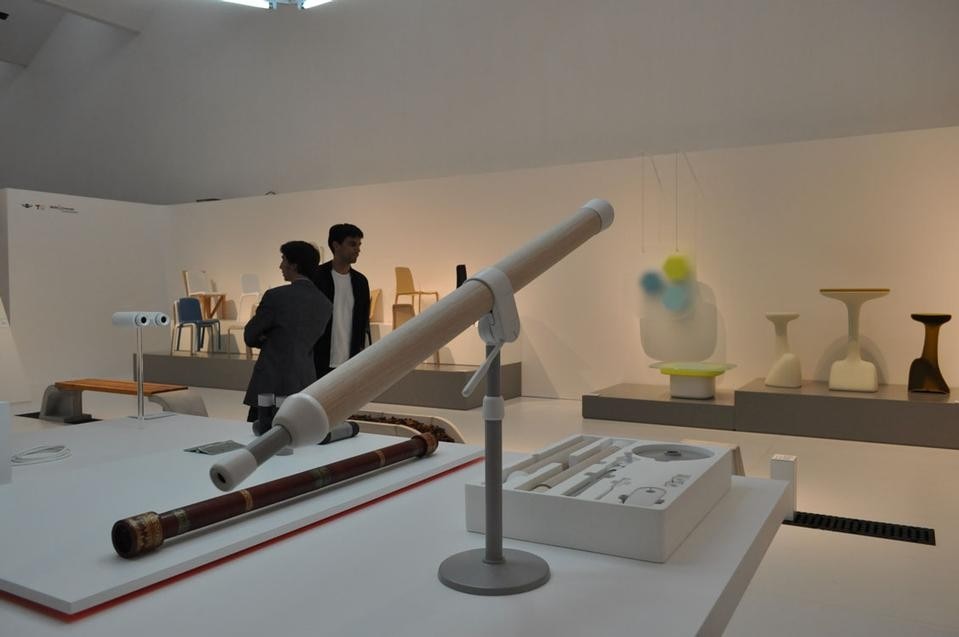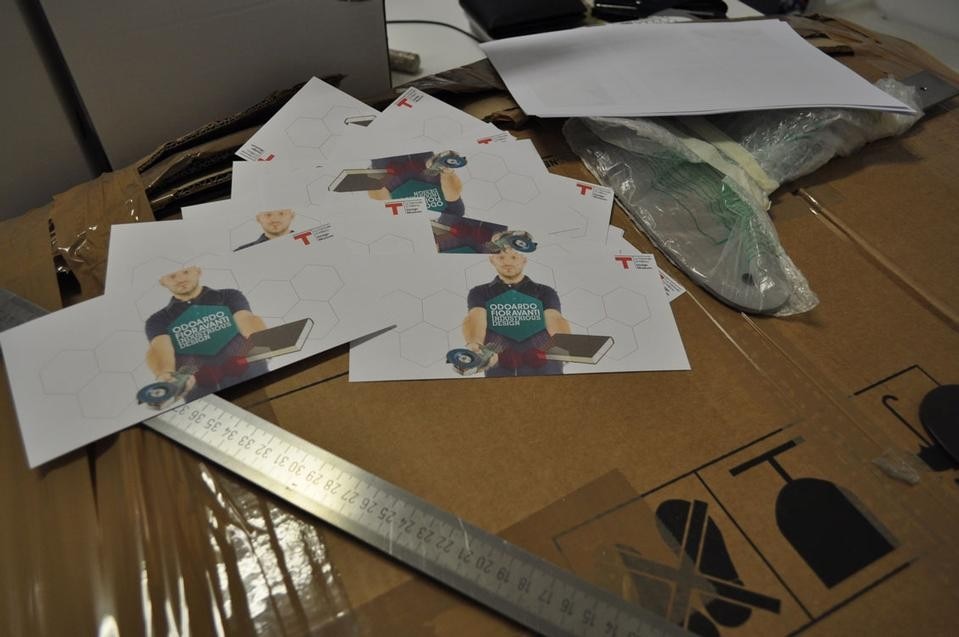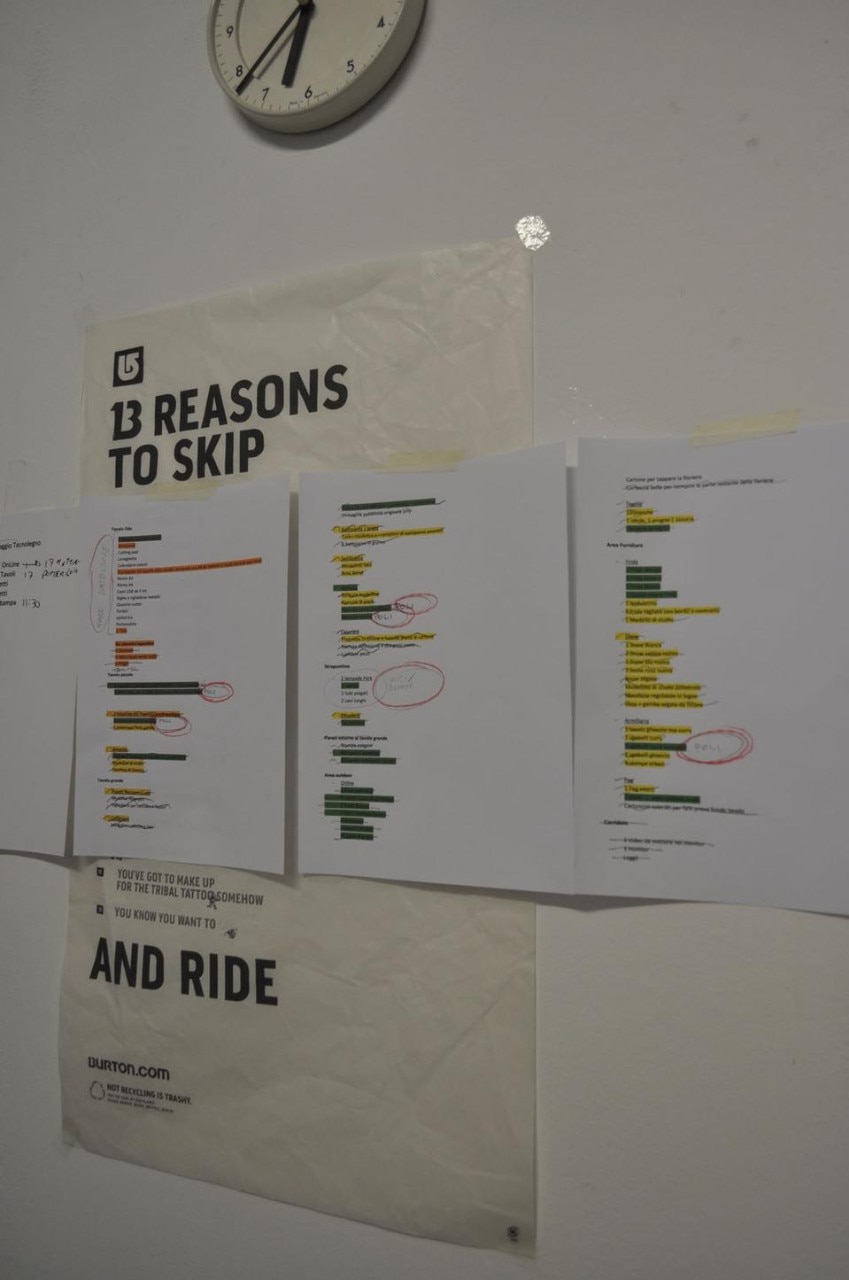We went looking for him but it was quite complicated because Sapper does not like the limelight. He doesn't like living in the glossy world of design. I see him as a link to a certain German culture, a sometimes severe design culture but one that manages to express itself without becoming pornographic. It was an encounter with a world that fascinates me and that I want to be even more fascinated by. He was not a real curator because the exhibition was structured by a work team: Ali Filippini, as the cultural back-up for the catalogue and exhibition contents; Chiara Alessi for the catalogue; Paolo Giacomazzi for the graphic design and Emanuele Zamponi for the photography. They are all very young and with Sapper it was a wonderful meeting of different generations. He gave us a hand building the exhibition and then fell in love with my work and offered to write the introduction.
You have abandoned the traditional exhibition formula (which you call "souvenir pictures") so instead of merely setting out a number of designs, your exhibition includes a residency. You will "move into" the Triennale for a month. Tell us what will happen? Will you work on a specific project?
I was asked to do a retrospective exhibition but, actually, I have been working for so few years that it felt weird. So we came up with a prospective exhibition, looking for keys to the near future and not just narrating my – recent – past. The design story seems to move slowly and be removed from the public. The thought behind the exhibition was to focus on the work process. As with a music concert, you have the production of a work of art from real life, visible to the audience. We sought an equivalent in the world of design. Not so much to stage an amazing production but to describe the everyday routine of design and bring people closer to the objects. People who come and see the exhibition can ask me to explain anything they like. The objects are arranged on large tables with explanatory displays. I work at a normal desk, as I would in my studio. I sketch and make models. The number of objects will grow and at the end of the exhibition there will be some sort of update re the beginning. Unlike souvenir pictures, the exhibition will be a slightly blurred picture, where you can see I am moving. I move so much that I am doing it there too. Mine is intended as a gesture to the people, not just communication.
Encounters are planned with the public and even children. Is it important for you to explain what you are doing?
A calendar of initiatives (workshops with children, meetings with high schools and universities...) has been drawn up. Some designers work in a hyper-communicational manner and deck out the objects with their message. This occurs less in my case and I like the idea of accompanying people backwards to discover objects. Paolo Giacomazzi's exhibition display was designed for this purpose. We will describe two or three steps for each object: the prototype, the object that inspired us, something funny about the object... We will try to provide several levels of interpretation so that everyone can find more meanings than in an object on the supermarket shelf. I am convinced that people are taking more interest in design. Think of phenomena like Ikea, which is evangelising people to design. On the other hand, I think some objects communicate too much and are almost pornographic. They take people's imagination away. To quote a friend, if a chair shows a bottom, perhaps people will have nothing more to think about themselves. They have to add that missing piece. It is a step backwards, a design that does not say everything there is to say and leaves room for thought, a little eroticism.
The title – Industrious Design – stresses the relationship between design and production/companies. What kind of relationship do you have with companies and how does develop? Is it still possible to establish a real dialogue?
I am very fond of industry because it allows your message to reach a huge number of people. If your message comes in the form of a plastic chair, a wooden chair or a corkscrew, it can go far and to people you had never thought of. This is what excites me most. And since you only do this kind of work for the thrill of it, this is the emotion I want from my work. We also chose the word 'industrious' because it refers to the changes taking place in the profession. The figure of the designer is expanding today. He takes the workflow into his small studio-company, which before would have been in the production sector. Some great Italian design companies still want to be part of the process and develop a product but most of the new firms are less interested. The general effort designers have to make is absorbing the workflow that companies can no longer cope with. So, designers develop the technical side and the engineering, to a degree of detail that used to be unthinkable. They even find suppliers for the company and put different players in contact so that a new object is born. They may even do the communication - taking the photographs and coming up with advertising ideas. It is as if the designer were producing a large fiction story for an object that does not yet exist. He prepares its whole life and sells this package to the companies, who in this way lose their traditional role and become evolved distributors, who focus on the relationship with the customer.
How do you view the more experimental side of design that stems from working with small galleries and results, at least initially, in limited series?
For me, it is a source of joy and torment. The problem is that many people leapt into this field because they saw it did not have the strict rules of industry, nor even of art where there is a much greater originality issue. This sector has a number of people who work really well. But it is the work of the bespoke tailor, which I believe remains distant from the common people - partly for reasons of price. I can buy a table by a Dutch designer who tells me a long story – and if he doesn't I don't understand it – and pay Euro 50,000 for it. That is not design. A couple of comments on design: it has to be something that a fairly large number of people can afford and that can be replicated industrially. It is not design if I can only make 100 copies of an object. That design research done by people like Paolo Ulian – one of my greats – or Studio Libertiny – which has a magical touch – is the upper echelon of design. It is like looking at the stars - they are far away, inaccessible and they inspire you, but they have a different purpose.
Odoardo Fioravanti. Industrious Design
22 September — 24 October 2010
Triennale di Milano
